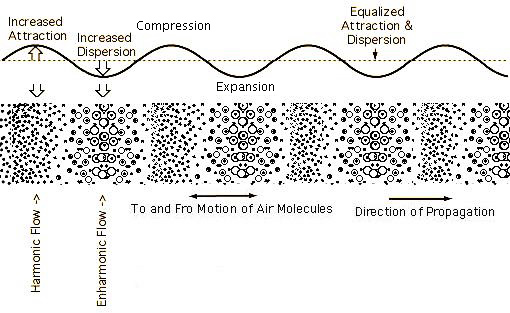What is Sound?

Before going
into the science of how a clarinet works, lets
have a quick discussion of what sound is. When
many people describe sound, they often describe it as a wave. But
what exactly does that mean? Normally, when
someone imagines a wave, they imagine ocean waves
or earthquakes. How could sound possibly possess
these same qualities? As it turns out, sound is a
sort of compressional wave, much different from
how many other waves function. While ocean waves
represent changes in the oceans height at any
point, compressional wave can be represented by a
change in pressure.
 http://pondscienceinstitute.on-rev.com/svpwiki/tiki-index.php?page=Figure+9.11+-+Compression+Wave+with+expanded+and+contracted+Orbits
http://pondscienceinstitute.on-rev.com/svpwiki/tiki-index.php?page=Figure+9.11+-+Compression+Wave+with+expanded+and+contracted+Orbits
As in the picture above, particles move and
bump into other particles. This creates regions of
both high and low pressure. These changes in
pressure are picked up by the ear and interpreted
as sound. Depending on how many times per second
the high pressure regions reach the ear, the pitch
will be interpreted differently by the ear. By
increasing the frequency, you increase the pitch.
|